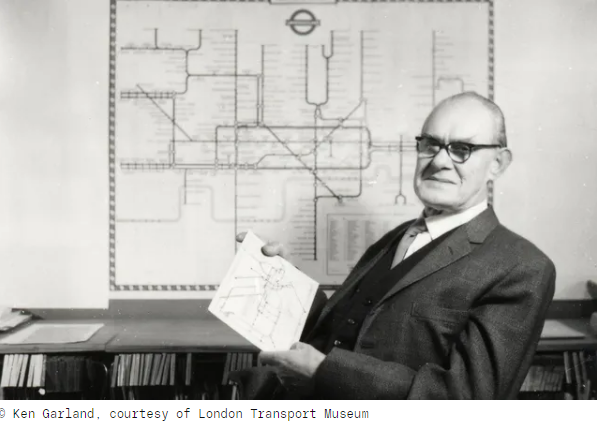Maps play essential role in navigating, understanding the world
By Korea Post Editorial Writer Ms. Esi Han

How often do you use maps in your daily life? Whether it's for finding your way around a new city, planning a road trip, or simply checking the weather forecast, maps play an essential role in helping us navigate and understand the world around us.
A subway map is one of them. The prospect of starting a sudden trip can be daunting, but knowing that subway lines can get us to our destination on time brings a sense of comfort.
At first glance, the complicated subway map can serve as a beacon of hope amidst the chaos of the journey. Maps that contain the maze of intersecting subway lines, like the twists and turns of life, serve as guides to help us navigate unfamiliar territory and reach our destination.
I vividly remember how comforting the subway map in London was for me when I was afraid of finding my way in a country I already knew. I had to go underground and look only at the track. The most iconic subway map was designed in 1931 by Harry Beck in Britain, the birthplace of subway history. This map is now adopted and used in many countries, including Korea.

When this user-friendly map format first appeared in the UK, it was not popular. A diagram-type map expressed each route in a different color, and the individual description of the stations was simplified and undervalued compared to a map drawn around information such as existing physical distances.
However, the reaction of passengers who are real users was different. Designed around readability and convenience, this subway map format was recognized for its ease of access and adopted the same format not only in London but also around the world.
The designer understood and approached the purpose of the subway map correctly. He designed a map to help passengers navigate their systems quickly and easily, and as a result, he was able to provide the information passengers needed in a simplified diagram.
It is not a geographically accurate map, but a diagram that easily explains the system in a public space such as a subway. It has a very simple but clear design that embraces passengers' anxiety.
In order to reduce the possibility of confusion and errors, the subway map currently in use is more than just a practical guideline in that it should be easily read by users.
Of course, technology and design that represent maps have evolved over time to reflect user convenience.
Subway displays and apps on phones provide users with the information they need in real-time. The key to the service here is still to provide clear and concise information, and the program helps plan passengers' routes and saves time.
Revolutionary technologies and corresponding designs often provide people with many advantages, such as greater convenience and safety. However, these benefits are not always limited to cutting-edge technologies or innovative designs.
Subway maps are a prime example. In everyday life, GPS may seem like a low-tech subway map, but it still serves us well when we go underground and start our journey. Another example is traffic lights. The technology to provide predictable information that shows only three colors in time is enough to signal drivers and pedestrians to stay safe on the road.
After all, recognizing that the best solution is not always the most up-to-date or high-tech is a way to show gratitude for the various designs and techniques that help us in our daily lives.
Looking at the subway map, it looks like a flow of energy in various colors that shows the lifeline. It looks like a podium that organizes the life of chaos. The efforts of those times when people found their way along the stars and sailed with compasses were mapped. We start and finish our safe journey through various maps.
A map is not just a destination but a guide that presents a clear path in our chaos, making it easy to navigate the unknown or the surrounding world. So, why not try using a subway map as a metaphor for problem-solving?
By breaking down complex issues into smaller, more manageable parts, we can navigate our way to a solution. Just like using a subway map to navigate a city, we can use a problem-solving "map" to guide us through the steps we need to take.
I encourage you to consider using subway maps as a tool not only for getting around but also for simplifying your thinking and finding solutions to problems. Give it a try and see how it can help you!

